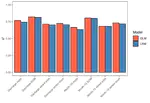Biomarkers and prognostic modelling in SCI using proteomics, bioinformatics and in vitro models
 Image credit: Unsplash
Image credit: UnsplashThe focus of this project is to develop a prognostic biomarker panel for spinal cord injury (SCI) and to enhance our understanding of the mechanisms involved in nerve injury in order to identify new targets with potential for nerve repair.
The student will use proteomic (iTRAQ), biochemical and bioinformatic analyses to investigate the serum proteome. iTRAQ proteomics analyses will be used to identify potential prognostic indicators/new targets in models of SCI. The student will utilise bioinformatics tools to identify biological pathways and networks.
We anticipate that the student will have generated an extensive list of potential prognostic indicators/novel targets for the treatment of SCI. We will focus our attention on proteins which: (1) have the greatest significant (i.e., lowest p-value) difference in expression (between the groups tested i.e. acute vs. subacute or complete vs. incomplete; and (2) are known to be involved in axon guidance or growth. The student will validate the proteins of interest identified via ELISA, where ELISAs are not available; he will validate the proteomic findings via Western Blot analyses.
The student will use in vitro models of nerve growth and SCI to conduct preliminary functional studies and to determine how manipulating the expression of these proteins can affect nerve growth. We have a good track record of examining the effects that proteins and drug compounds have on cells grown in culture (Bara et al., 2015; Wright et al., 2014; Wright et al., 2010; Wright et al., 2010; Wright et al., 2007).
Novel engineering science: the design, implementation and validation of an in vitro model of a contusion (blunt force) spinal cord injury.
Novel bio-engineering science: the manipulation of mechanistically important proteins (determined from the bioinformatics analysis) in established contusion injury models.
This project is funded by the EPSRC.
